The Inspiration of Paulinian Education
Paulinian education draws its inspiration, vision and mission from its sponsor, a religious Congregation founded in 1696 at Levesville-la-Chenard, 38 kilometres from Chartres in France. The seed of this Congregation was laid in the small village in the outskirts of Chartres by Reverend Fr. Louis Chauvet, a young French priest of 30 who was assigned to work in this poor Parish where poverty and ignorance were wide-spread. Once he arrived at the Parish, he resolved to devote his life to this parish where the Lord had led him. His aim was simply to get the inhabitants to know and love God through instructing their children and visiting the old and sick in the Parish.
The Mission of Fr. Louis Chauvet

Fr. Chauvet was from Petres, a small town in the neighbourhood of Aix-en-provence. The day of Fr. Chauvet was filled with a multitude of activities that included sacraments, church services, religious teaching, counseling, spiritual direction, care of the disabled and the destitute, coupled with prayers, studies and relaxation in the evening. When he arrived at the village, he found that the Presbytery was in a very bad condition, so he started renovating the premises, as he understood that a good workman needs good tools, so he started with the building of the infrastructure. Fr. Chauvet's mission, apart from Levesville-la-Chenard, extended over three villages that included inhabitants who were landlords, farmers, craftsmen and tradesmen.
Fr. Chauvet was a learned man who loved learning. Immediately after settling in, he started to contact the parishioners and offered free education to their children. Initially, there was resistance from the farmers and workmen as they wanted their children to help them in their work rather than study since practically nobody in the village could read or write. They thought that education was only for the wealthy who need not work to make a living. Furthermore, how could they pay for an education. This was not surprising as for the past three centuries, the population had known nothing but wars, looting and insecurity. They had no aspiration to improve their condition of life, much less, to view education as a basic right for their children.
Winning Support to Start a School
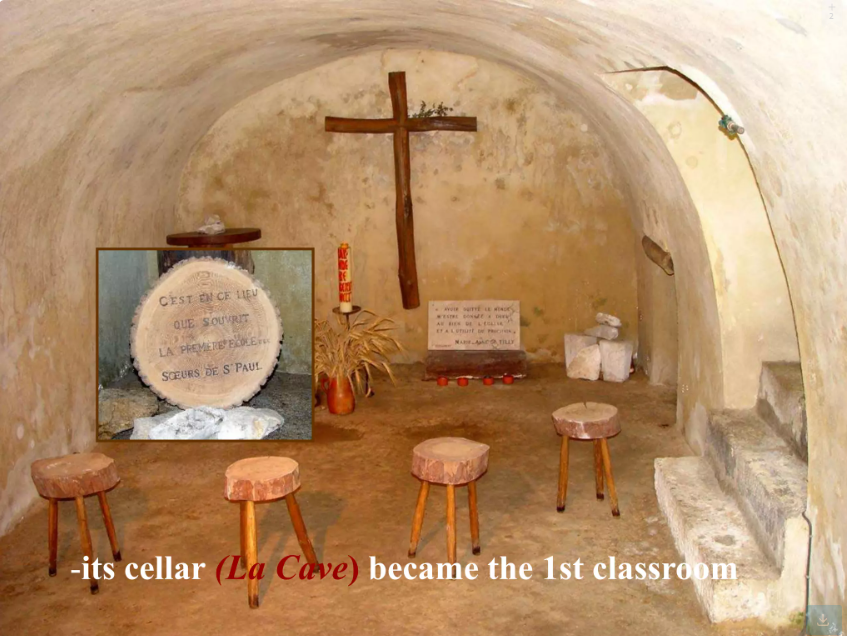
Fr. Chauvet then called a council meeting of the parishioners on 28 April, 1695 and proposed to them his intention of opening a school at Levesville and training some school teachers, but he had no financial means. He therefore suggested renting out a few acres of land from the parish so as to provide for the expenses of a school teacher. After much heated debate, finally the council gave him the go-ahead to start the school even though they thought that his project was too new and perhaps too ambitious.
Anne de Tilly Joining Fr. Chauvet's Mission
Fr. Chauvet immediately began his recruitment of suitable young ladies by inviting them to join him in his project. Without much ado, he approached Madamoiselle Anne de Tilly whom he had observed to be a devoted person and invited her to join his project. As Anne was close to God, she was able to discern the will of God in this invitation. Once her eligibility to serve was confirmed by Fr. Chauvet, in this case, being educated, well behaved and knowing how to rely on God, Anne started her mission to train school teachers.
Marie Micheau Started Teaching in Levesville Girls' School


Around Easter in 1700, the Levesville girls' school started operation, first of all in a cellar. Another girl named Marie Micheau was the first school-teacher who taught the children reading, writing and catechism. In the meantime, a royal decree was issued that was aligned with the forward-looking vision of Fr. Chauvet. The proclamation of 1698 made by King Louis XIV finally led to the re-organization of the hospitals and it brought about school teachers being assigned to all the parishes in order to teach catechism, prayers, reading and writing to the children.
The Cradle of the Sisters of St. Paul de Chartres
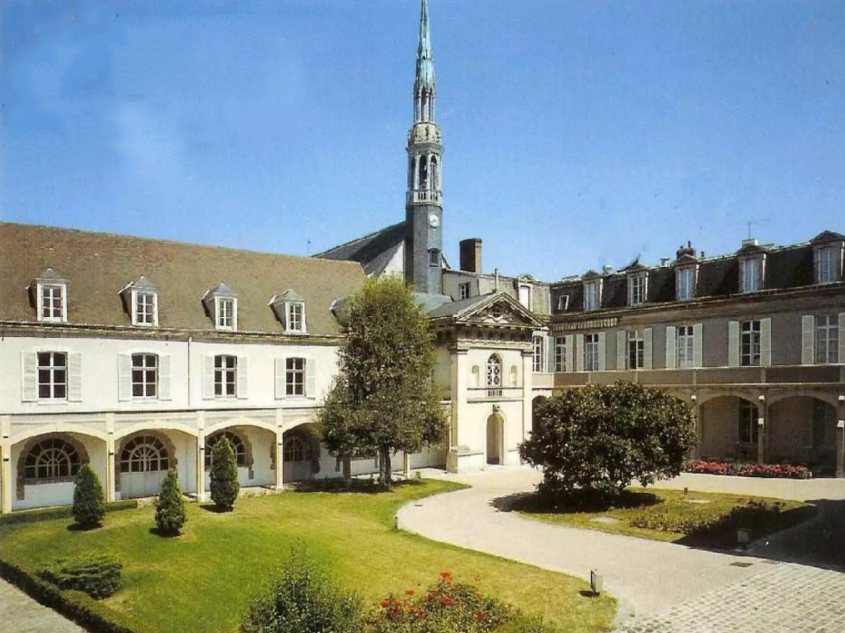
Soon after, the parishioners agreed to sell a plot of land to Fr. Chauvet to build the future school teachers' house which eventually became the cradle of the Congregation of the Sisters of St. Paul de Chartres. When the building was completed, Fr. Chauvet gathered around him Anne de Tilly and four other peasant girls, among whom were Marie Micheau and Barbe Foucault, to help him to look after the sick and the children. During this time, Fr. Chauvet had yet no intention of forming a religious community –his main concern was to train school teachers who would not only develop children's intelligence but also inspire them with a love for manual work.
Apart from teaching children and visiting the sick and destitute, these young girls had to work in order to support themselves. It was only shortly after living together as a community that Fr. Chauvet gave them a common rule of life and appointed Marie Micheau as the superior of the community of the daughters of the school with the help of Anne de Tilly, who belonged to a noble family in the village of Allaines, not far from Chartres. It should be noted that Anne de Tilly faced many hardships from her stepmother for having associated with this group of peasant girls and training them to be school teachers.
The Extension of the Mission to the Surrounding Villages
These young teachers were introduced by Fr. Chauvet to teach in many other nearby villages. Little by little, the daughters of the school, as they were called, were found all over the Beauce country and their task was greatly appreciated while their life remained simple and efficient. These school daughters found their strength in a life of prayer and attended the religious services in the village church. They worked hard to provide for their own needs in order that they could render free service and free education and Christian training to the children. They also helped to nurse in hospices and visit the sick.
Invited to Chartres by Bishop Paul Godet des Marais
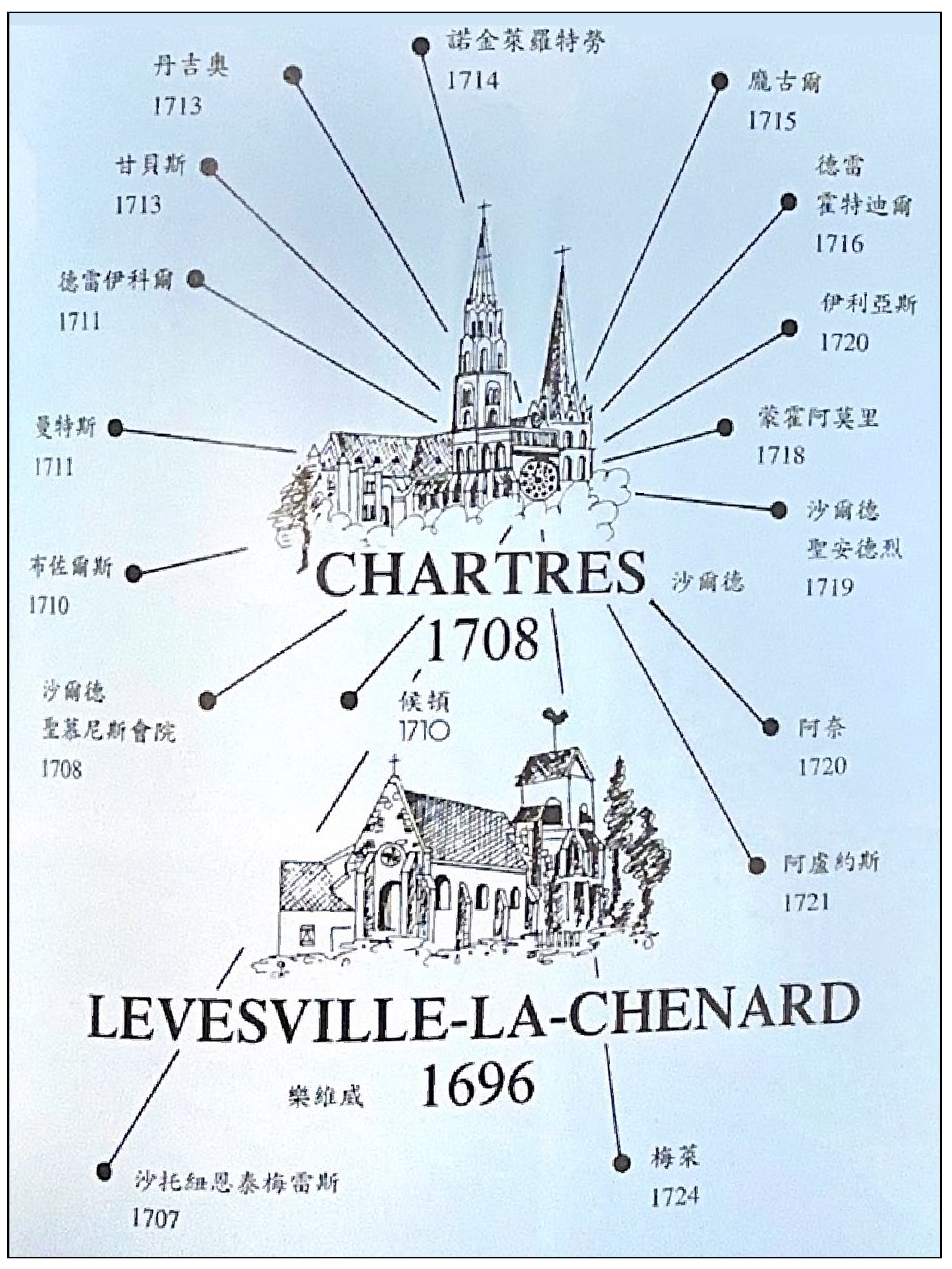
The mission of the daughters of the school was more and more appreciated in the region of Chartres. In 1708, Paul Godet des Marais, Bishop of Chartres, invited them to settle in Saint Maurice, a suburb of Chartres. The Bishop entrusted them to the protection of the Apostle Paul, hence the present Congregation's name: Sisters of St. Paul de Chartres. Once settled in, they immediately got down to work by opening a district school free of charge for the poor children. In 1710, Fr. Chauvet died at the age of forty-six, but then the Sisters had already made good progress with the support of the Bishop of Chartres and Father Claude Marechaux.
The Sisters often prayed before Our Lady of the Pillar in the cathedral of Chartres, which was later adopted by the Sisters as Our Lady of Chartres. Devotion to Virgini Pariturae, the Virgin who is to give birth, followed a century-old tradition which existed in Chartres before the Christian era. These Sisters in this devotion were reminded to be like their model and patron, Our Lady, to give life and happiness to those whom they serve.
Extending the Mission from France to Far-off Countries
By 1727, the Sisters had spread throughout France and worked in seventeen establishments: schools and hospitals. In the same year, at the Bishopric of Chartres, the Sisters accepted the request from the King of France to leave for Cayenne to look after the hospital and the school there in South America. Among the many who volunteered for the mission overseas, only four Sisters were selected to set off for the mission.
The Mission in Hong Kong, First in the Far East
A request was made by Mgr. Forcade, Vicar Apostolic of Japan and Prefect of Hong Kong, China in 1847 to the Mother Superior General to send out Sisters to run the hospital for the Irish soldiers and to run the school for their daughters so as to prevent them from being lost to the Protestant ministers' free schools. There were also young Portugese girls from Macau who wanted to attend a Catholic school. Furthermore, Sisters were needed to train young Chinese in the Holy Institute who would later on take up the responsibility of running hospitals and schools for their own people.
The Sisters responded to this request of Mgr. Forcade with great generosity and speed and in September 1848, four Sisters arrived in Hong Kong after a few months of travel from France. Immediately, they got down to work and sowed the seeds of the present St. Paul's Convent School in 1854, which was first founded as an Anglo-Chinese school, formerly known as the French Convent School. The school was moved to the present site in 1914 and it was suspended during World War II when the school was used as a hospital. The school was re-opened in 1945 and during the following five years, there were considerable expansion of the campus which comprises six acres.

Further Development of Paulinian Education in Hong Kong

The school name was formally changed to St. Paul's Convent School in December 1955 in favour of its patron saint, St. Paul, as the Sisters in Hong Kong were no longer predominantly French but represented by many nationalities. The present building, which consists of six storeys, was completed in June, 1981. A sesquicentennial block of seven storeys was added to celebrate the 150th Anniversary of its foundation. A green block, the Smart Oasis was built to highlight the school’s sustainable development and to celebrate its 160th Anniversary.
 St. Paul's Convent School initially incorporated the Kindergarten, Primary and Secondary section as one single school. With the introduction of vernacular education for all primary schools in the 1960s, St. Paul's Convent School primary section turned private as it had to cater for children of all nationalities by using English as the teaching medium. However, St. Paul's Primary Catholic School in Happy Valley used the vernacular and thus remained in the aided sector. Adjacent to the primary school, a secondary school, St. Paul's Secondary School, was built and began its operation in 1960. This was founded as a Science stream extension of St. Paul's Convent School as there was an urgent need for Science places for girls in Hong Kong during that period. St. Paul's Secondary School became one of the last schools belonging to the 22 Grant Schools Council under the Great Code of Aid of 1904.
St. Paul's Convent School initially incorporated the Kindergarten, Primary and Secondary section as one single school. With the introduction of vernacular education for all primary schools in the 1960s, St. Paul's Convent School primary section turned private as it had to cater for children of all nationalities by using English as the teaching medium. However, St. Paul's Primary Catholic School in Happy Valley used the vernacular and thus remained in the aided sector. Adjacent to the primary school, a secondary school, St. Paul's Secondary School, was built and began its operation in 1960. This was founded as a Science stream extension of St. Paul's Convent School as there was an urgent need for Science places for girls in Hong Kong during that period. St. Paul's Secondary School became one of the last schools belonging to the 22 Grant Schools Council under the Great Code of Aid of 1904.
.jpg) Then in the 1970's, there was rapid expansion of nine years of compulsory education, the Sisters again responded to the then Education Department's request and founded a secondary school in the new estate of Lam Tin in Kowloon Peninsula, namely, the present St. Paul's School (Lam Tin).
Then in the 1970's, there was rapid expansion of nine years of compulsory education, the Sisters again responded to the then Education Department's request and founded a secondary school in the new estate of Lam Tin in Kowloon Peninsula, namely, the present St. Paul's School (Lam Tin).
The school had also operated post-secondary Secretarial courses from 1939-1980s as there were very few opportunities for girls in post-secondary education during that period. With the rapid expansion of the tertiary sector, the demand for secretarial training was no longer there as all our graduates were successfully admitted into tertiary institutions to pursue degree courses. We therefore closed down the commercial section and expanded our Form Six classes instead.
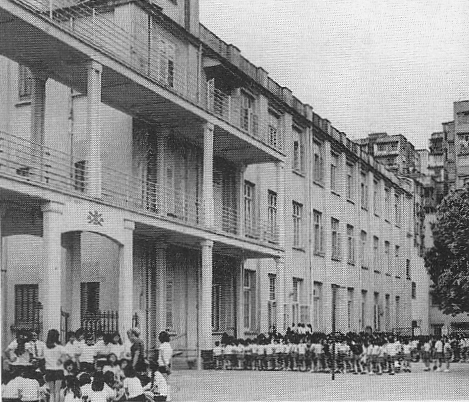
 A small International Section had also been set up for a while to cater for the education of returnees from Australia and Canada. With the advent of the new millennium and the growth of globalization, St. Paul's Convent School has reached world-class international standard that can meet the needs of these children and so the international section was terminated.
A small International Section had also been set up for a while to cater for the education of returnees from Australia and Canada. With the advent of the new millennium and the growth of globalization, St. Paul's Convent School has reached world-class international standard that can meet the needs of these children and so the international section was terminated.
Vision and Mission of Paulinian Education
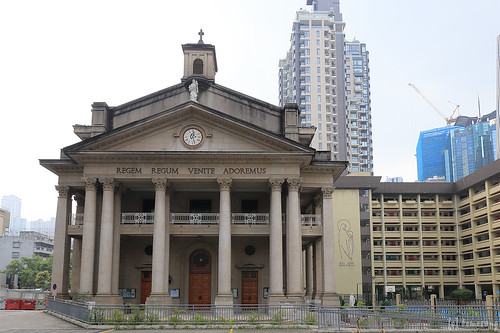
The vision of Paulinian Education is to provide a seamless bilingual education for girls in a happy and motivating learning environment so that they will learn to embrace the Paulinian heritage of truth, beauty, goodness, nobility and honour. This provision is best exemplified in St. Paul's Convent School where there is a so-called through-train arrangement when a child can progress from kindergarten to primary, and from primary to secondary. In order to uphold this vision, St. Paul's Convent School changed its status from Grant-in-aid to Direct Subsidy Scheme so that it can take back all the students from the primary section. Providing a happy and motivating learning environment is stressed as we are the daughters of St. Paul that are placed under Our Lady of Chartres, the Virgin and Mother that brings life to all. Hence, as her daughters, we have to treasure life and give happiness and fullness of life to those whom we serve.
 Fr. Chauvet's mission was to raise the quality of life of the people in his parish, both spiritually and materially. Similarly, the mission of Paulinian Education is to provide an all-round education, based on Christian values, that enhances the quality of life, both spiritually and materially, for our Paulinians so that they can contribute positively to their home, profession and society with charity, conscience, confidence, courage, creativity, competence and commitment.
Fr. Chauvet's mission was to raise the quality of life of the people in his parish, both spiritually and materially. Similarly, the mission of Paulinian Education is to provide an all-round education, based on Christian values, that enhances the quality of life, both spiritually and materially, for our Paulinians so that they can contribute positively to their home, profession and society with charity, conscience, confidence, courage, creativity, competence and commitment.
The seven Cs are carefully chosen and sequenced. First of all, charity, as stated in the Bible, is the greatest and most enduring among all the virtues. Furthermore, charity encompasses compassion and loving presence of God as God is Love. Secondly, conscience or consciousness, being used interchangeably in our context, represents the importance of being able to discern what is the right thing to do as well as having the awareness of our thoughts and actions, and being pro-active in our response to the needs of others and society. Thirdly, once we are armed with charity and conscience, we enjoy the confidence of knowing the way forward, particularly, as we know in Whom we place our trust.
 Fourthly, courage is required when we have to act not so much according to the cultural norm but rather to take on the prophetic role of innovating or launching out. Moral courage, in particular, involves the mettle for doing the right thing and not just doing things right. Fifthly, creativity works hand in hand with confidence and courage and thrives best when there is freedom, autonomy, and a happy and motivating learning environment. Creativity is required when we want to innovate and launch out in paths that have never been trodden before.
Fourthly, courage is required when we have to act not so much according to the cultural norm but rather to take on the prophetic role of innovating or launching out. Moral courage, in particular, involves the mettle for doing the right thing and not just doing things right. Fifthly, creativity works hand in hand with confidence and courage and thrives best when there is freedom, autonomy, and a happy and motivating learning environment. Creativity is required when we want to innovate and launch out in paths that have never been trodden before.
Sixthly, competence is the ability to apply knowledge and skills to situations appropriately at the right time and in the right place. It is also the ability to work efficiently and effectively with people and tools that help one achieve the goals. Creativity needs competence to express itself in ways that can be shared and understood by all.
Finally, commitment is required to sustain continuous growth and development. We need people who are ready to commit and to give their all to sustainable development.
Stress on Modern Infrastructure for Learning
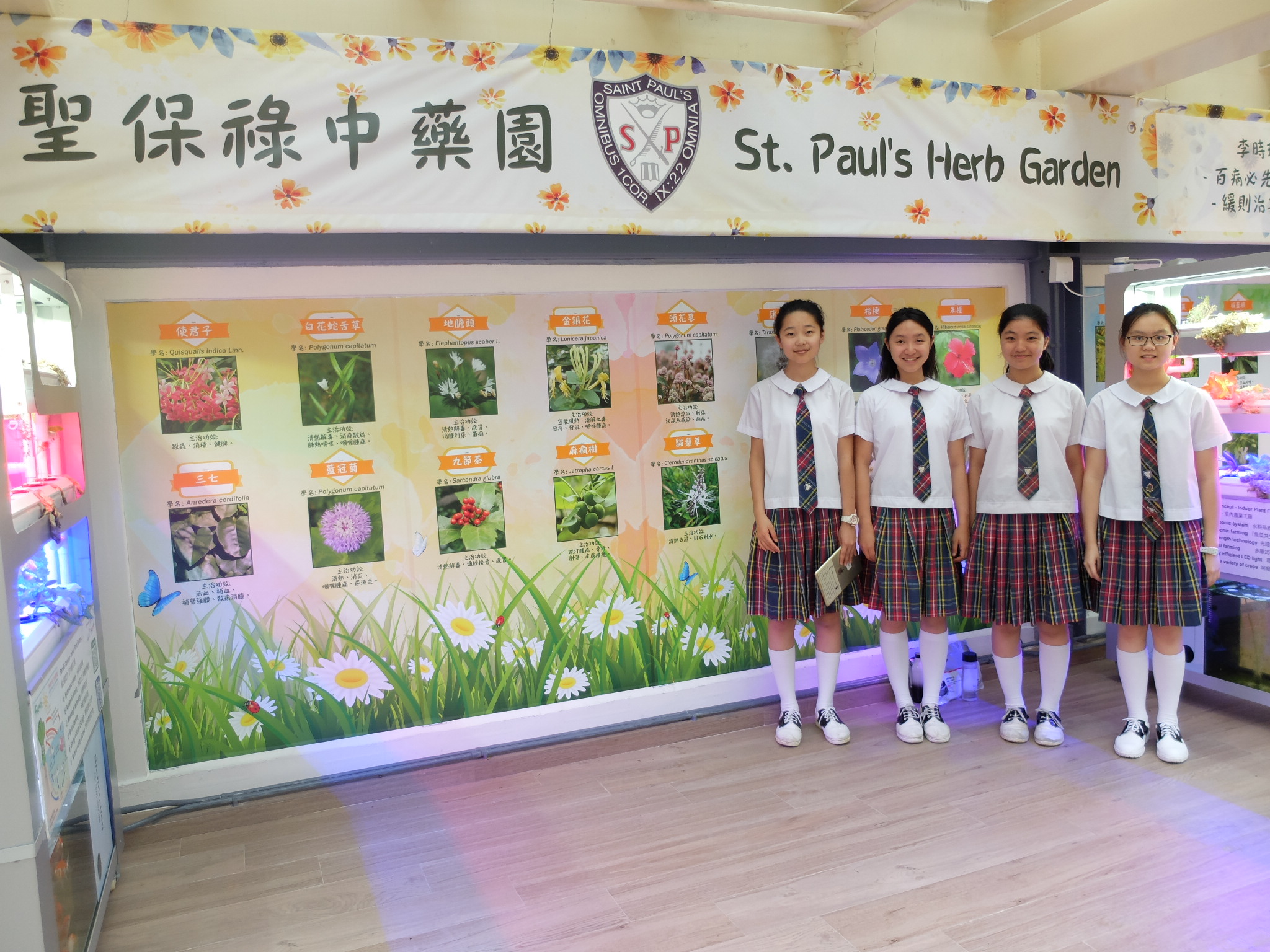
Again, drawing its inspiration from Fr. Chauvet and the fact that the workman needs good tool to work well, the Sisters have persistently addressed the need to build a safe and sound infrastructure that provides excellent facilities. Hence, when St. Paul's Secondary School was built as a Science section of St. Paul's Convent School, it was reported as having ultra modern facilities in the Science Laboratory. In the early 1980s, St. Paul's Secondary School was the first to have a computer laboratory sponsored by IBM with software support from Waterloo University, USA. It was also the first school that adopted Integrated Science in its curriculum in the early 1960s. Furthermore, it has been selected as one of the Pilot Schools on Information Technology in Education in 1998.
 Staying abreast with this high speed of change in technology is St. Paul's Convent School which has now become internationally well-known as an ICT specialist school. With stronga support from the Quality Education Fund and Education Bureau, the school has built an impressive infrastructure, initially on optical fibres in the 1990s and now on wireless. Students and staff can access the internet safely and conveniently from any part of the school. The school is committed to adopting the latest technologies to enhance the reliability, security and efficiency of its network infrastructure. This includes the use of fiber optic cabling, network security, wireless networks and network monitoring and management tools.
Staying abreast with this high speed of change in technology is St. Paul's Convent School which has now become internationally well-known as an ICT specialist school. With stronga support from the Quality Education Fund and Education Bureau, the school has built an impressive infrastructure, initially on optical fibres in the 1990s and now on wireless. Students and staff can access the internet safely and conveniently from any part of the school. The school is committed to adopting the latest technologies to enhance the reliability, security and efficiency of its network infrastructure. This includes the use of fiber optic cabling, network security, wireless networks and network monitoring and management tools.
St. Paul's Convent School has built a Classroom of the Future equipped with all the state-of-the-art facilities. This classroom is environmental friendly as natural lighting is used throughout the day. With its 45° sky-light slope feature, solar panels are placed on top of the roof to demonstrate the function of re-usable energy. The feel of this room is entirely unconventional, flexible and changeable for diversified use according to the needs of the learners. It is a perfect venue for video-conferencing and multi-media presentations involving multi-national communities throughout the world. This Classroom of the Future showcases tomorrow's IT-enriched learning environment.










 St. Paul's Convent School initially incorporated the Kindergarten, Primary and Secondary section as one single school. With the introduction of vernacular education for all primary schools in the 1960s, St. Paul's Convent School primary section turned private as it had to cater for children of all nationalities by using English as the teaching medium. However, St. Paul's Primary Catholic School in Happy Valley used the vernacular and thus remained in the aided sector. Adjacent to the primary school, a secondary school, St. Paul's Secondary School, was built and began its operation in 1960. This was founded as a Science stream extension of St. Paul's Convent School as there was an urgent need for Science places for girls in Hong Kong during that period. St. Paul's Secondary School became one of the last schools belonging to the 22 Grant Schools Council under the Great Code of Aid of 1904.
St. Paul's Convent School initially incorporated the Kindergarten, Primary and Secondary section as one single school. With the introduction of vernacular education for all primary schools in the 1960s, St. Paul's Convent School primary section turned private as it had to cater for children of all nationalities by using English as the teaching medium. However, St. Paul's Primary Catholic School in Happy Valley used the vernacular and thus remained in the aided sector. Adjacent to the primary school, a secondary school, St. Paul's Secondary School, was built and began its operation in 1960. This was founded as a Science stream extension of St. Paul's Convent School as there was an urgent need for Science places for girls in Hong Kong during that period. St. Paul's Secondary School became one of the last schools belonging to the 22 Grant Schools Council under the Great Code of Aid of 1904..jpg) Then in the 1970's, there was rapid expansion of nine years of compulsory education, the Sisters again responded to the then Education Department's request and founded a secondary school in the new estate of Lam Tin in Kowloon Peninsula, namely, the present St. Paul's School (Lam Tin).
Then in the 1970's, there was rapid expansion of nine years of compulsory education, the Sisters again responded to the then Education Department's request and founded a secondary school in the new estate of Lam Tin in Kowloon Peninsula, namely, the present St. Paul's School (Lam Tin). 
 A small International Section had also been set up for a while to cater for the education of returnees from Australia and Canada. With the advent of the new millennium and the growth of globalization, St. Paul's Convent School has reached world-class international standard that can meet the needs of these children and so the international section was terminated.
A small International Section had also been set up for a while to cater for the education of returnees from Australia and Canada. With the advent of the new millennium and the growth of globalization, St. Paul's Convent School has reached world-class international standard that can meet the needs of these children and so the international section was terminated.
 Fr. Chauvet's mission was to raise the quality of life of the people in his parish, both spiritually and materially. Similarly, the mission of Paulinian Education is to provide an all-round education, based on Christian values, that enhances the quality of life, both spiritually and materially, for our Paulinians so that they can contribute positively to their home, profession and society with charity, conscience, confidence, courage, creativity, competence and commitment.
Fr. Chauvet's mission was to raise the quality of life of the people in his parish, both spiritually and materially. Similarly, the mission of Paulinian Education is to provide an all-round education, based on Christian values, that enhances the quality of life, both spiritually and materially, for our Paulinians so that they can contribute positively to their home, profession and society with charity, conscience, confidence, courage, creativity, competence and commitment.  Fourthly, courage is required when we have to act not so much according to the cultural norm but rather to take on the prophetic role of innovating or launching out. Moral courage, in particular, involves the mettle for doing the right thing and not just doing things right. Fifthly, creativity works hand in hand with confidence and courage and thrives best when there is freedom, autonomy, and a happy and motivating learning environment. Creativity is required when we want to innovate and launch out in paths that have never been trodden before.
Fourthly, courage is required when we have to act not so much according to the cultural norm but rather to take on the prophetic role of innovating or launching out. Moral courage, in particular, involves the mettle for doing the right thing and not just doing things right. Fifthly, creativity works hand in hand with confidence and courage and thrives best when there is freedom, autonomy, and a happy and motivating learning environment. Creativity is required when we want to innovate and launch out in paths that have never been trodden before. Staying abreast with this high speed of change in technology is St. Paul's Convent School which has now become internationally well-known as an ICT specialist school. With stronga support from the Quality Education Fund and Education Bureau, the school has built an impressive infrastructure, initially on optical fibres in the 1990s and now on wireless. Students and staff can access the internet safely and conveniently from any part of the school. The school is committed to adopting the latest technologies to enhance the reliability, security and efficiency of its network infrastructure. This includes the use of fiber optic cabling, network security, wireless networks and network monitoring and management tools.
Staying abreast with this high speed of change in technology is St. Paul's Convent School which has now become internationally well-known as an ICT specialist school. With stronga support from the Quality Education Fund and Education Bureau, the school has built an impressive infrastructure, initially on optical fibres in the 1990s and now on wireless. Students and staff can access the internet safely and conveniently from any part of the school. The school is committed to adopting the latest technologies to enhance the reliability, security and efficiency of its network infrastructure. This includes the use of fiber optic cabling, network security, wireless networks and network monitoring and management tools.